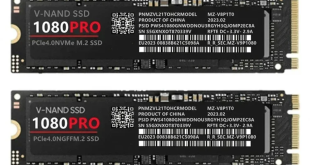Installing a solid state drive is a straightforward process. Simply slide the drive into the connector and reseal the chassis by sliding in the outer door. The process takes a couple of seconds.
With the Solid State drive installed internally, the rest of the install procedure is logical. The 3.5 inch mechanical drive works in conjunction with the SSD and needs connected into the same controller card.
The Xpander controller card has a SATA header offset to the right, using the supplied SATA cable, this attaches to the 3.5 inch mechanical drive as seen above. Both 2.5 inch SSD and 3.5 inch drive are then fed power via two sata power connectors from the power supply.
When the drive is correctly installed, as seen in the image above, it will be identified as the ‘ICY DOCK SSD Xpander'. It is worth checking this before proceeding further.
When the system boots up for the first time, Windows 7 shows a device drive install with the name of the product highlighted.
Both partitions are automatically configured as we can see by checking diskmgmt.msc.
Icydock explain ‘SSD Xpander combines 3.5 inch HDD capacity with SSD Performance. It automatically creates two partitions, one is double the SSD capacity and the second partition will be the size of the 3.5 inch HDD minus double the capacity of the SSD.'
We used a 250 GB Intel 510 SSD Drive and a 1TB Samsung HDD for this configuration and the image shows how the product configured the drives. Partition 1 (D), which is the ‘performance hybrid' installation is set to RAW mode and it needs formatted – this is half the size of the total capacity of the mechanical drive. The secondary partition (E) is unallocated by default, so a quick format is needed.
 KitGuru KitGuru.net – Tech News | Hardware News | Hardware Reviews | IOS | Mobile | Gaming | Graphics Cards
KitGuru KitGuru.net – Tech News | Hardware News | Hardware Reviews | IOS | Mobile | Gaming | Graphics Cards










